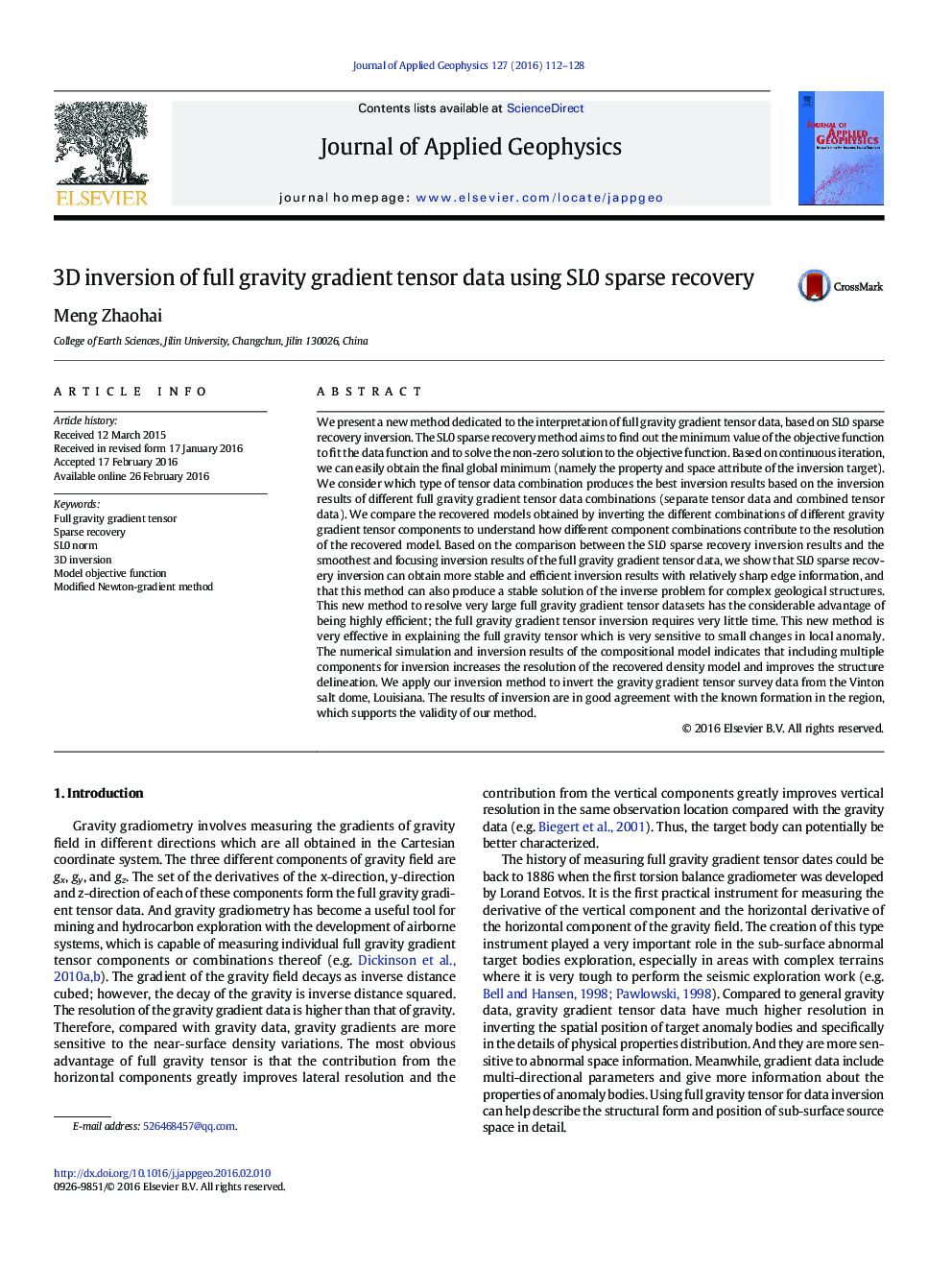| Article ID | Journal | Published Year | Pages | File Type |
|---|---|---|---|---|
| 4739776 | Journal of Applied Geophysics | 2016 | 17 Pages |
•We proposed a new 3D full gravity gradient tensor inversion technique.•Our proposed inversion algorithm gets an accurate density distribution image.•The important factor σ gets the global minimum solution of objective function.•The modified Newton method can resolve the problem accurately.
We present a new method dedicated to the interpretation of full gravity gradient tensor data, based on SL0 sparse recovery inversion. The SL0 sparse recovery method aims to find out the minimum value of the objective function to fit the data function and to solve the non-zero solution to the objective function. Based on continuous iteration, we can easily obtain the final global minimum (namely the property and space attribute of the inversion target). We consider which type of tensor data combination produces the best inversion results based on the inversion results of different full gravity gradient tensor data combinations (separate tensor data and combined tensor data). We compare the recovered models obtained by inverting the different combinations of different gravity gradient tensor components to understand how different component combinations contribute to the resolution of the recovered model. Based on the comparison between the SL0 sparse recovery inversion results and the smoothest and focusing inversion results of the full gravity gradient tensor data, we show that SL0 sparse recovery inversion can obtain more stable and efficient inversion results with relatively sharp edge information, and that this method can also produce a stable solution of the inverse problem for complex geological structures. This new method to resolve very large full gravity gradient tensor datasets has the considerable advantage of being highly efficient; the full gravity gradient tensor inversion requires very little time. This new method is very effective in explaining the full gravity tensor which is very sensitive to small changes in local anomaly. The numerical simulation and inversion results of the compositional model indicates that including multiple components for inversion increases the resolution of the recovered density model and improves the structure delineation. We apply our inversion method to invert the gravity gradient tensor survey data from the Vinton salt dome, Louisiana. The results of inversion are in good agreement with the known formation in the region, which supports the validity of our method.
Graphical abstractThe SL0 sparse recovery inversion of joint inversion of differential gravity gradient tensor components gyx, gyz, gxz, gyy and gxx.Figure optionsDownload full-size imageDownload as PowerPoint slide
